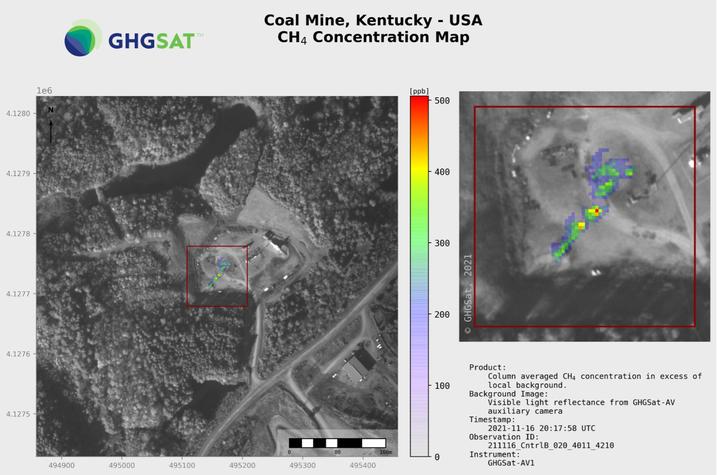Kentucky Geological Survey, Energy and Environment Cabinet Announce Project to Measure Methane Emissions

LEXINGTON, Ky. (Feb. 22, 2022) — The Kentucky Energy and Environment Cabinet (EEC) and the Kentucky Geological Survey (KGS) at the University of Kentucky (UK) have announced a collaborative project focused on mine methane (CH4) emissions in the state. Developed in response to Kentucky’s new energy strategy, KYE3: Designs for a Resilient Economy, the project will measure methane emissions from underground mine ventilation and other mine-related sources using a combination of aircraft, drones and vehicles.
The EEC plans to use the data to explore how methane, a potent greenhouse gas, may be captured for methane-related economic development opportunities such as local electricity generation or renewable natural gas and carbon offset markets.
“This is an excellent example of collaboration and how the KYE3 energy strategy addresses energy, environment and economic development — three issues that are inextricably linked,” said Kenya Stump, executive director of the EEC’s Office of Energy Policy.
The first step in reducing methane emissions is accurate measurement. This is a significant challenge as sources of methane emissions are so numerous and widespread that discrete measurements at individual sites are not feasible.
"Because methane emissions are derived from many sources, successful abatement requires accurate measurements in an efficient manner,” says to KGS Principal Investigator Thomas Parris, Ph.D.
KGS geologists are working with UK’s College of Engineering and Department of Chemistry (in the UK College of Arts and Sciences), along with GHGSat, Inc., to conduct and compare measurements from aircraft, drones, and vehicles. KGS began measuring methane emissions from 22 active and inactive mines in the Appalachian Basin of Eastern Kentucky and Illinois Basin in Western Kentucky in the fall of 2021. The research team will complete measurements in the first part of 2022 and the results will be available to the public in a digital map product by early summer.
According to the U.S. Environmental Protection Agency, methane is a hydrocarbon that is a primary component of natural gas. Over a period of 100 years, the global warming potential of methane is 30 times greater than carbon dioxide. Methane, which also contributes to the formation of ozone, is emitted from both natural and human-influenced sources such as landfills, oil and natural gas systems, agricultural activities, coal mining, stationary and mobile combustion, and wastewater treatment. Because of its high global warming potential over decades, reducing methane emissions is a critical near-term strategy for limiting global warming.
As the state’s flagship, land-grant institution, the University of Kentucky exists to advance the Commonwealth. We do that by preparing the next generation of leaders — placing students at the heart of everything we do — and transforming the lives of Kentuckians through education, research and creative work, service and health care. We pride ourselves on being a catalyst for breakthroughs and a force for healing, a place where ingenuity unfolds. It's all made possible by our people — visionaries, disruptors and pioneers — who make up 200 academic programs, a $476.5 million research and development enterprise and a world-class medical center, all on one campus.




